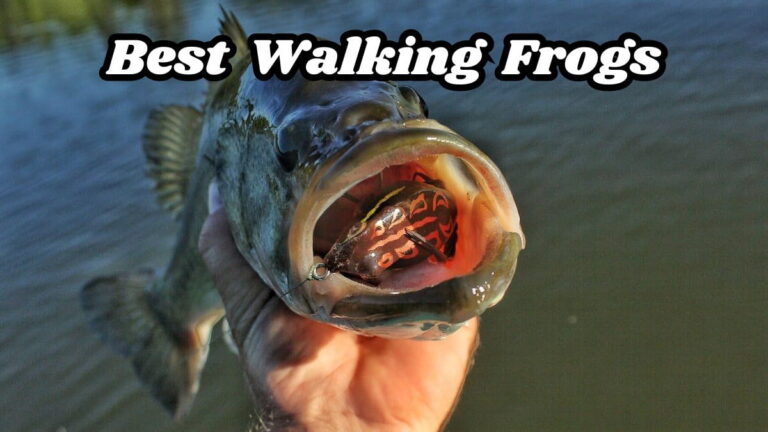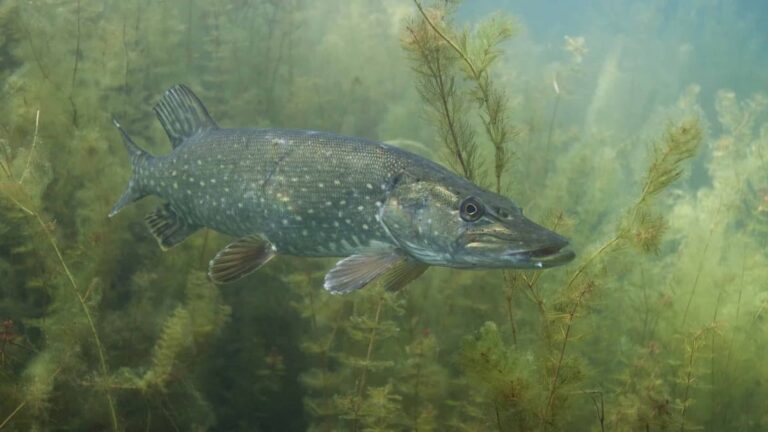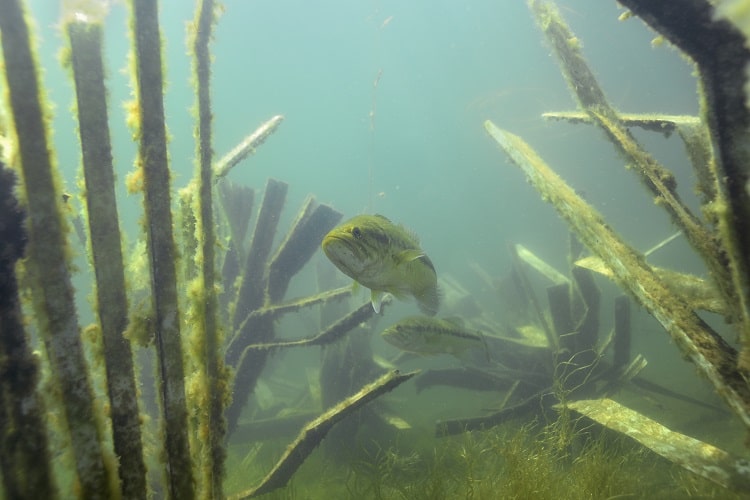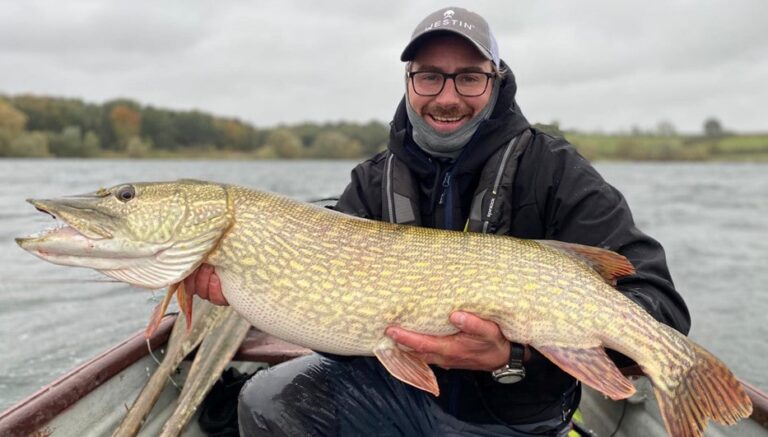Bass Fishing Lures and When to Use Them: Guide Fishing Lures for Bass
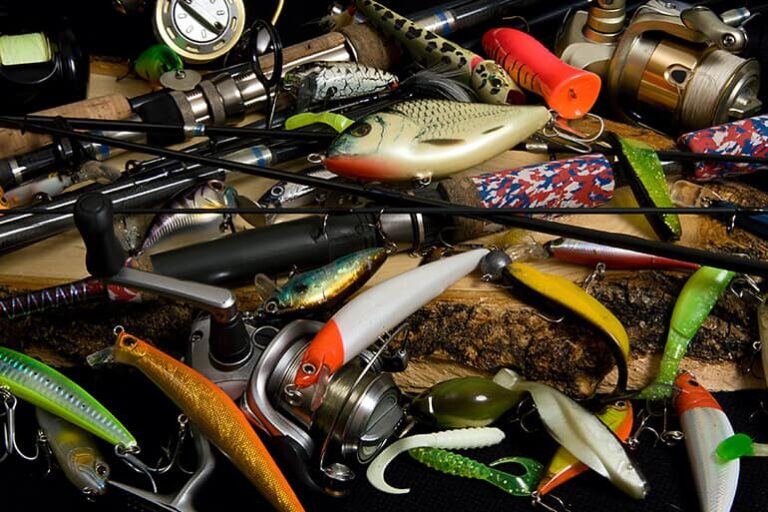
One of the key factors in reeling in those big, trophy-worthy bass is using the right lures.
Each type of lure has its own charm and specific way of enticing these feisty fish, and we’re here to break it all down for you.
You’ll learn what makes each of these lures unique, when to use them, and the techniques that will help you maximize their effectiveness.
So, let’s dive in and discover the fascinating world of bass fishing lures together!
Understanding Bass Fishing Lures
Bass fishing lures are artificial baits designed to mimic the appearance and movement of natural prey, with the aim of enticing bass to strike.
These lures come in various shapes, sizes, and types, each with its own unique characteristics and fishing techniques.
The purpose of using bass fishing lures is to attract the attention of bass, provoke their predatory instincts, and ultimately entice them to bite.
By selecting the right lure and employing effective techniques, anglers can increase their chances of a successful bass fishing adventure.
Main Fishing Lures for Bass
1. Crankbaits
2. Jigs
3. Spinnerbaits
4. Soft Plastics
5. Topwater Lures
6. Jerkbaits
Benefits and Potential Scenarios for Each
- Crankbaits:
- Benefits: Crankbaits are excellent for covering a large area quickly and imitating injured baitfish. They produce vibrations and erratic movements that can trigger aggressive strikes from bass.
- Suitable Scenarios: Use crankbaits when bass are actively feeding near the surface or in shallow water, especially around cover such as rocks or submerged vegetation.
- Jigs:
- Benefits: Jigs are versatile and can be used in various depths and cover types. They excel at imitating crawfish or other bottom-dwelling creatures, making them effective for enticing bass hiding in structure.
- Suitable Scenarios: Jigs are ideal for fishing around submerged vegetation, rocky structures, or areas with dense cover. They are particularly effective during colder months or when bass are in a more lethargic mood.
- Spinnerbaits:
- Benefits: Spinnerbaits create a lot of vibration and flash, attracting bass from a distance. They are versatile lures that can be retrieved at different speeds and depths.
- Suitable Scenarios: Spinnerbaits are excellent for fishing in murky or stained water, as well as around submerged grass, weed edges, or areas with low visibility. They are particularly effective in triggering reaction strikes from aggressive bass.
- Soft Plastics:
- Benefits: Soft plastic lures offer lifelike movement and come in various shapes and sizes, imitating a wide range of baitfish and prey. They provide excellent versatility and can be rigged in different ways.
- Suitable Scenarios: Soft plastics are effective in a variety of scenarios, including fishing around structure, drop-offs, and weed beds. They work well year-round and can be used with different techniques such as Texas rigging, Carolina rigging, or weightless presentations.
- Topwater Lures:
- Benefits: Topwater lures create enticing surface action, mimicking wounded prey or frogs. They elicit explosive strikes and offer an exciting visual experience for anglers.
- Suitable Scenarios: Use topwater lures during low-light conditions, early mornings, or late evenings when bass are more likely to feed near the surface. They are ideal for fishing in calm water or around lily pads, weed mats, and other surface cover.
- Jerkbaits:
- Benefits: Jerkbaits are designed to mimic injured or fleeing baitfish, providing a realistic and irresistible presentation to bass. Their erratic side-to-side darting action can trigger aggressive strikes from both active and inactive bass.
- Suitable Scenarios: Jerkbaits excel in colder water conditions, particularly during the pre-spawn and post-spawn periods when bass are more likely to be in a feeding frenzy. They are effective in clear water and can be worked at various depths, making them ideal for targeting suspended bass or those lurking near structure such as rock piles or submerged timber.
1. Crankbaits

Crankbaits are popular and versatile bass fishing lures known for their ability to cover a large area quickly and effectively. Let’s delve into the explanation of crankbaits and explore their unique design:
- Body Shape: Crankbaits typically feature a compact and streamlined body shape, resembling a baitfish or other natural prey. This design allows them to move through the water with minimal resistance, enabling long and accurate casts.
- Diving Lip: One distinguishing feature of crankbaits is the presence of a diving lip or bill positioned near the lure’s head. This lip creates hydrodynamic lift and downward force, causing the lure to dive to a specific depth when retrieved. The size and angle of the diving lip determine the diving depth of the crankbait.
- Buoyancy: Crankbaits exhibit different levels of buoyancy, which affect their action and diving depth. Floating crankbaits rise to the water’s surface when paused or retrieved slowly, making them suitable for fishing shallow areas or near surface cover. Sinking or suspending crankbaits maintain their depth or suspend at a specific depth, making them ideal for targeting deeper bass or specific depth zones.
- Internal Rattles: Many crankbaits are equipped with internal rattles, small metal balls or chambers that produce sound when the lure is moved. These rattles create vibrations and mimic the noise of baitfish, attracting the attention of bass and triggering strikes.
- Hooks and Trebles: Crankbaits are typically equipped with sharp, durable hooks to ensure a solid hookset when a bass strikes. Treble hooks, consisting of three hook points, are commonly used on crankbaits to increase the chances of hooking the fish.
Tips for Fishing Crankbaits
Using crankbaits effectively can significantly improve your bass fishing success. Here are some tips to help you make the most of these versatile lures:
- Match the Depth: Select crankbaits that dive to the appropriate depth for your fishing location. Consider the water depth, structure, and the depth at which bass are likely to be feeding. This ensures that your crankbait runs at the optimal depth, increasing your chances of enticing strikes.
- Vary the Retrieve Speed: Experiment with different retrieval speeds to find the one that triggers the most strikes. Sometimes a steady, consistent retrieve works best, while other times a faster or slower retrieve, with occasional pauses or twitches, can be more effective in enticing bass to strike.
- Bump and Deflect: Utilize the diving lip of the crankbait to your advantage. When retrieving near structure such as rocks, stumps, or submerged vegetation, purposely bump the lure into these obstacles. This erratic deflection imitates a startled or injured prey, often triggering reaction strikes from nearby bass.
- Pay Attention to Water Temperature: In colder water, bass tend to be less active. Opt for a slower retrieve and choose crankbaits with a tighter wobble to mimic the slower movements of baitfish in cold conditions. In warmer water, when bass are more active, you can experiment with faster retrieves and crankbaits with wider wobbles.
- Use Natural Color Patterns: Select crankbaits with color patterns that closely resemble the natural prey in the water you’re fishing. Match the color to the prevailing conditions, such as clearer or stained water, and take into account the forage species present.
- Stay Alert and Observe: Pay attention to any signs of bass activity, such as surface disturbances or baitfish movement. Adjust your crankbait presentation based on the behavior of the bass and the underwater environment you’re fishing.
- Consider Noise and Vibration: Crankbaits with internal rattles or those that produce significant vibration can be effective in murky or low-visibility water. The added noise and vibration help bass locate the lure more easily.
Experiment with different sizes, colors, and retrieves until you find what works best in your specific fishing conditions. By applying these tips and adapting your approach, you’ll increase your chances of enticing bass to strike your crankbait and enjoy a successful bass fishing outing.
2. Jigs
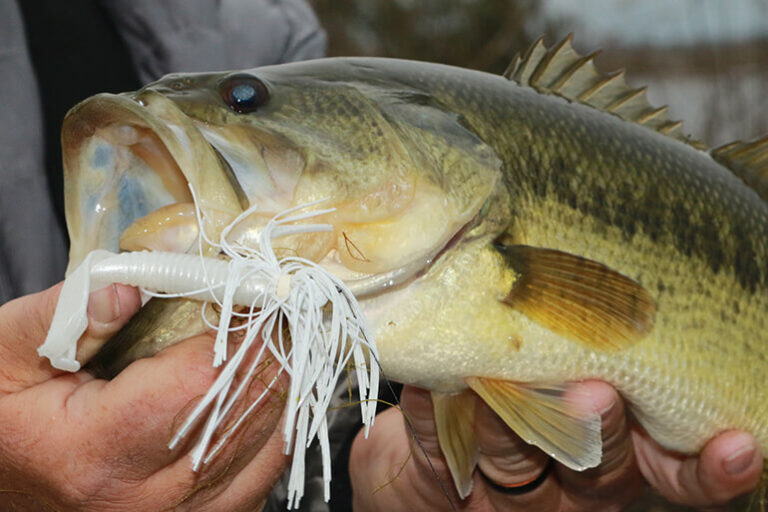
Jigs are versatile and highly effective bass fishing lures that deserve a spot in every angler’s tackle box. Let’s dive into an introduction to jigs and explore their key components:
- Jig Head: The jig head is the foundation of a jig. It consists of a weighted head typically made of lead or tungsten. The weight determines the sink rate and helps the jig reach desired depths quickly. Jig heads come in various shapes, such as round, football, or finesse, each offering distinct benefits and applications.
- Skirt: Attached to the jig head is a skirt, which is usually made of silicone or living rubber strands. The skirt provides bulk and lifelike movement to the jig, imitating the appearance of prey such as crawfish or baitfish. Skirts come in an array of colors and patterns to match different fishing conditions and mimic the forage species in the water.
- Trailer: The trailer is an optional soft plastic bait that you attach to the jig’s hook. It enhances the profile, action, and scent of the jig, making it more enticing to bass. Popular trailer options include creature baits, crawfish imitations, or worms. Experimenting with different trailers can help you find the combination that works best for the bass in your fishing area.
- Weed Guard: Many jigs are equipped with a weed guard, a series of flexible bristles or fibers near the jig’s hook. The weed guard helps prevent snagging in vegetation or cover while still allowing bass to bite and get hooked. The stiffness and density of the weed guard can vary, so choose one that suits the fishing conditions you encounter.
- Hook: The hook is a critical component of the jig, responsible for hooking and securing the bass. Jigs typically feature a strong, sharp hook, often with a wide gap to accommodate various trailer sizes. Ensure that the hook is appropriate for the size of bass you are targeting and consider the hook’s quality to prevent bending or breaking during the fight.
Jigs are renowned for their versatility, allowing anglers to fish in various depths and cover types. Understanding the components of a jig helps you customize your setup based on the specific fishing conditions and the behavior of bass in your area.
Techniques for Fishing Jigs
When it comes to fishing with jigs, employing the right techniques can make all the difference in attracting bass and enticing them to strike. Here are some proven techniques to maximize your success:
- Pitching and Flipping: Pitching and flipping are techniques used to precisely deliver jigs into specific targets, such as pockets in vegetation, under docks, or around submerged structure. With a short, accurate cast, allow the jig to sink to the desired depth and then use your rod to subtly impart small hops or twitches to mimic the movement of prey. This method is effective for targeting bass in tight cover or areas with limited space for a longer cast.
- Dragging and Hopping: This technique involves dragging the jig along the bottom and intermittently lifting it off the substrate. Use a slow and steady retrieve, occasionally pausing and shaking the rod tip to create subtle movements. This imitates a crawfish or baitfish scurrying along the bottom, and is best done with a football jig.
- Swimming Retrieve: When bass are actively feeding and holding at mid-depths or near the surface, a swimming retrieve can be highly effective. Maintain a steady retrieve while occasionally imparting side-to-side twitches or jerks with your rod tip. This mimics a wounded baitfish swimming erratically, enticing bass to strike.
- Hopping and Bouncing: In areas with rocky or gravelly bottoms, hopping and bouncing the jig can imitate a crayfish or baitfish moving between rocks. After allowing the jig to sink, lift your rod tip sharply and then allow the jig to fall back to the bottom. Repeat this action, creating a hopping motion that can trigger reaction strikes from nearby bass.
- Slow Dragging: When fishing in cold water or during periods when bass are less active, a slow dragging technique can be effective. Drag the jig slowly along the bottom, keeping contact with the substrate. Pause occasionally to let the jig rest on the bottom, imitating a vulnerable prey item. This slow and methodical presentation can entice lethargic bass to strike.
By mastering these techniques and adapting them to the prevailing conditions, you’ll increase your chances of attracting bass and experiencing thrilling hooksets.
3. Spinnerbaits
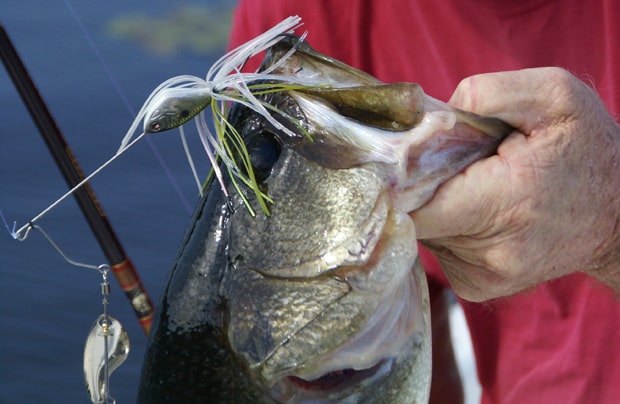
Spinnerbaits are dynamic and versatile fishing lures that have been a staple in anglers’ tackle boxes for decades. Let’s dive into the definition and characteristics of spinnerbaits:
- Definition: Spinnerbaits are multi-component lures consisting of a metal wire frame bent into a V-shape, with one or more spinning blades attached to the top arm. Below the blades, a lead or weighted head holds the hook, and a silicone or living rubber skirt provides bulk and movement.
- Spinning Blades: One of the defining features of spinnerbaits is their spinning blades. These metallic blades rotate when retrieved, creating flash and vibration in the water. The most common blade types are Colorado and Willow blades, each with unique characteristics. Colorado blades generate more vibration and are ideal for attracting bass in murky or stained water, while Willow blades produce more flash and work well in clear water or under bright sunlight.
- Skirt: Attached to the bottom arm of the spinnerbait is a skirt made of silicone or living rubber strands. The skirt adds bulk and imitates the appearance of baitfish or prey, enhancing the lure’s overall profile and attracting the attention of bass.
- Weighted Head: Spinnerbaits have a lead or weighted head that adds casting distance and allows the lure to sink or run at a specific depth. The weight can vary depending on the desired application, water depth, and retrieval speed.
- Versatility: Spinnerbaits are renowned for their versatility. They can be retrieved at different speeds, depths, and with various techniques. They are effective in various fishing scenarios, such as targeting shallow cover, submerged grass, or open water. Spinnerbaits can imitate baitfish, provoke reaction strikes, and cover a wide area quickly, making them an excellent choice for locating actively feeding bass.
- Weedless Design: Many spinnerbaits are designed to be relatively weedless. The upward-turned hook and the skirt’s positioning help minimize snagging in vegetation or cover, allowing anglers to fish confidently in areas with potential obstacles.
- Attraction and Reaction: Spinnerbaits are known for their ability to attract bass through their visual and vibrational appeal. The combination of spinning blades, skirt movement, and flash imitates a distressed or fleeing prey, triggering a reaction strike from nearby bass.
Spinnerbat Tips and Techniques
Using the right retrieval techniques can greatly increase your success when fishing with spinnerbaits. Here are some tips and techniques to help you use spinnerbaits effectively and maximize your chances of attracting and hooking bass:
- Slow Roll Retrieve: Start with a slow and steady retrieve, keeping the spinnerbait just above or slightly below the desired depth. This allows the blades to spin and create flash and vibration, imitating a wounded or fleeing baitfish. Experiment with different speeds to find the optimal retrieve rate that entices the bass to strike.
- Speed Up and Slow Down: Vary your retrieve speed during the retrieve to trigger reaction strikes. Speed up the retrieve for a short burst, imitating a prey trying to escape. Then slow down to a more subtle presentation, allowing the spinnerbait to flutter and fall enticingly. Alternating between faster and slower sections can often trigger strikes from bass following the lure.
- Yo-Yo Retrieve: When fishing around structure or cover, try a yo-yo retrieve. After casting, let the spinnerbait sink to the desired depth. Then raise your rod tip sharply, causing the bait to rise quickly toward the surface. Allow it to fall back down on a slack line, mimicking a baitfish darting up and then fluttering down. This erratic movement can entice nearby bass to strike.
- Bump and Pause: Utilize the spinnerbait’s weedless design and bump it into cover or structure. As you retrieve, aim to make contact with submerged objects such as rocks, stumps, or weed edges. When the spinnerbait hits an obstacle, pause briefly before resuming the retrieve. This imitates a baitfish momentarily stunned or injured, often triggering a reaction strike from bass nearby.
- Retrieve Along Drop-Offs: When fishing along drop-offs or ledges, cast parallel to the shoreline or the edge of the structure. Retrieve the spinnerbait steadily, allowing it to swim along the contour of the drop-off. This imitates baitfish moving along the edge, attracting the attention of bass positioned along the structure.
- Experiment with Blade Combinations: Spinnerbaits often allow for interchangeable blades. Experiment with different blade combinations, such as using a larger Colorado blade in front of a smaller Willow blade. Varying the blade combination can alter the flash, vibration, and sound produced, potentially triggering different responses from bass.
- Pay Attention to Retrieves that Trigger Strikes: As you fish with spinnerbaits, take note of the retrieves that consistently trigger strikes. Pay attention to retrieve speed, pauses, and any specific movements that entice bass to bite. This observation will help you refine your technique and increase your success rate.
4. Soft Plastics
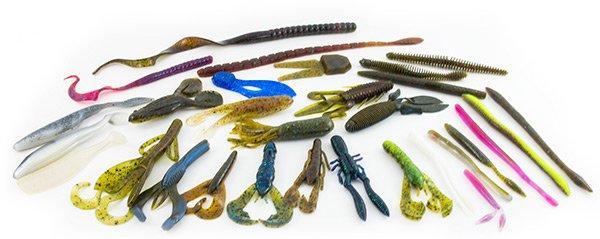
Soft plastics are a category of fishing lures that offer anglers versatility, lifelike movement, and a wide range of options to target bass successfully. Let’s delve into an overview of soft plastics and explore their advantages:
- Definition: Soft plastics are pliable, synthetic baits made of materials like soft plastic or silicone. They come in various shapes, sizes, and colors, imitating a wide range of baitfish, worms, insects, and other natural prey that bass feed on.
- Lifelike Movement: Soft plastics excel at mimicking the movement and texture of real baitfish and prey. The soft and flexible nature of these lures allows them to undulate, wiggle, and flutter in the water, creating a lifelike presentation that can deceive even the most wary bass.
- Versatility: Soft plastics offer immense versatility for bass fishing. They can be rigged in multiple ways, including Texas rigs, Carolina rigs, drop shots, or wacky rigs. This adaptability allows anglers to fish them at different depths, in various cover types, and with a range of techniques.
- Scent and Attraction: Many soft plastics are designed with scent-infused or salt-impregnated formulas. These enhancements add an extra level of attraction, enticing bass to hold on to the lure longer, increasing the chances of a successful hookset.
- Options for Every Scenario: Soft plastics come in a vast array of shapes, sizes, and colors, enabling anglers to match the specific forage species and conditions they encounter. From worms and creature baits to swimbaits and flukes, there’s a soft plastic lure for nearly every bass fishing scenario.
- Natural Presentation: Soft plastics have a natural feel and appearance in the water, closely resembling the prey bass feed on. This natural presentation can trigger the predatory instincts of bass, enticing them to strike.
Rigging Techniques and Presentation Methods
Rigging techniques and presentation methods for soft plastics are crucial in maximizing their effectiveness and enticing bass to strike. Here are some popular rigging techniques and presentation methods to consider:
- Texas Rig: The Texas rig is one of the most widely used and versatile rigging techniques for soft plastics. Insert a bullet-shaped weight into the head of the soft plastic, followed by a hook that is embedded into the body of the lure. This rigging allows for weedless presentations and is effective when fishing around cover or in vegetation. Retrieve the lure by dragging it along the bottom or hopping it to imitate a crawling or injured prey.
- Carolina Rig: The Carolina rig is ideal for fishing soft plastics in deeper water or when targeting bass in a wider area. Rig the soft plastic on a leader attached to a swivel, followed by a bead and a weight. This rig allows the bait to float slightly off the bottom while imparting enticing movement. Drag or hop the Carolina rig along the bottom with intermittent pauses to trigger strikes.
- Wacky Rig: The wacky rig is a simple yet effective presentation for soft plastics, particularly for finesse fishing. Simply hook the soft plastic through the middle, creating a balanced presentation with both ends free to wiggle. This rig produces a subtle, enticing action as the lure sinks slowly, imitating a wounded or dying prey. Use a gentle retrieve with occasional twitches or pauses to entice bass into striking.
- Drop Shot Rig: The drop shot rig is a finesse technique commonly used with soft plastic worms or creature baits. Tie a hook at the end of the line, leaving a tag end below it. Attach a weight, typically a drop shot weight, to the tag end. This rig allows the soft plastic to suspend above the weight, imitating a vulnerable or feeding prey. Use a gentle shake or twitch motion to create subtle movements that entice bass into striking.
- Ned Rig: The Ned rig is a popular finesse technique involving a small, mushroom-shaped jig head paired with a soft plastic stick bait or finesse worm. Thread the soft plastic onto the jig head, exposing the hook for better hooksets. The Ned rig is effective in clear or pressured waters, and the slow dragging or hopping retrieve imitates a small prey item for bass to target.
- Swimbaits: Soft plastic swimbaits are often rigged on a jig head or weighted swimbait hook. The weight and hook placement provide a realistic swimming action, making them ideal for imitating injured or fleeing baitfish. Retrieve the swimbait at varying speeds, ranging from a slow and steady retrieve to an erratic, twitchy retrieve to mimic different baitfish behaviors.
- Finesse Presentations: Soft plastics can be presented with finesse techniques such as drop shots, shaky heads, or weightless rigs. These subtle presentations are effective in clear water or when bass are in a more cautious or inactive mood. Utilize slow and subtle movements, often accompanied by pauses or slight twitches, to entice finicky bass into striking.
Experiment with different rigging techniques, retrieve speeds, and soft plastic styles to find the combination that triggers the most strikes in your fishing area. By mastering these techniques, you’ll enhance your chances of success and reel in more bass.
5. Topwater Lures

Get ready for some heart-pounding action with topwater lures! These exciting lures are designed to create enticing surface disturbances and imitate prey that bass feed on near the water’s surface. Let’s dive into an introduction to topwater lures and explore their purpose:
- Definition: Topwater lures, as the name suggests, are fishing lures specifically designed to be retrieved on or just below the water’s surface. They are built to mimic various surface-dwelling prey, such as insects, frogs, or injured baitfish.
- Surface Action: The primary purpose of topwater lures is to create surface disturbance, attracting bass by mimicking the movements and behaviors of prey that are visible to them. These lures produce enticing actions like splashes, pops, ripples, or a walking motion that imitates a wounded or struggling prey item.
- Visual and Auditory Appeal: Topwater lures rely on their visual and auditory appeal to trigger a bass’s predatory instincts. The commotion and noise generated by the lure’s action draw the attention of bass, who often cannot resist the opportunity for an easy meal presented on the water’s surface.
- Exciting Strikes: One of the thrilling aspects of using topwater lures is the explosive strikes they often elicit. The visual spectacle of a bass smashing the lure on the surface creates an adrenaline-pumping experience for anglers.
- Versatility: Topwater lures come in various shapes, sizes, and styles to imitate different prey items and cater to various fishing conditions. They can resemble frogs, buzzbaits, poppers, walkers, or prop baits. This versatility allows anglers to match the prevalent forage in the area and adapt to different fishing scenarios.
- Ideal Conditions: Topwater lures are particularly effective during low-light periods, such as early mornings, late evenings, or overcast days when bass are more likely to be feeding near the surface. They also shine in calm water conditions or when bass are actively targeting prey on the surface, such as during a feeding frenzy.
Topwater Fishing Strategies
Using topwater lures to catch bass can be a thrilling and rewarding experience. Here are some strategies to help you effectively utilize these lures and increase your chances of success:
- Choose the Right Time: Topwater lures are most effective during low-light periods, such as early mornings, late evenings, or overcast days. Bass tend to be more active near the surface during these times, making them more likely to strike at surface lures. However, don’t rule out topwater lures during other times of the day, as bass can still be enticed by the right presentation.
- Match the Prevalent Forage: Pay attention to the prevalent forage in the area you’re fishing. Select topwater lures that closely resemble the size, shape, and color of the baitfish, frogs, or insects that bass are feeding on. Matching the prey will increase the lure’s appeal and entice bass to strike.
- Vary Your Retrieval Techniques: Experiment with different retrieval techniques to find the one that triggers the most strikes. Popular techniques for topwater lures include the walk-the-dog retrieve, where you make the lure zigzag back and forth with short, rhythmic rod twitches. Popping and pausing retrieves create a splashing or popping sound to attract bass. The steady and subtle swimming retrieve can imitate a fleeing or injured prey.
- Pay Attention to Cadence and Timing: Along with varying your retrieval techniques, pay attention to the cadence and timing of your lure’s action. Alter the speed, duration of pauses, or the intensity of the pops to figure out what triggers the most strikes from bass. Sometimes a slow and deliberate retrieve with longer pauses can be more effective, while other times a faster and erratic retrieve may entice bass to strike.
- Target High-Percentage Areas: Focus your efforts on high-percentage areas where bass are likely to be holding. These include areas with cover such as lily pads, weed beds, fallen trees, or along the edges of vegetation. Points, pockets, or structure that funnel or concentrate baitfish can also be productive spots. Cast your topwater lure around these areas, making sure to work the lure as close to the cover as possible to entice bass lurking beneath.
- Be Mindful of Stealth: When using topwater lures, it’s important to be stealthy and minimize any unnecessary noise or disturbance. Approach your fishing spots quietly and make accurate casts to avoid spooking bass. Additionally, using monofilament or fluorocarbon line can provide better stealth than braided line, which may be more visible to wary fish.
6. Jerkbaits
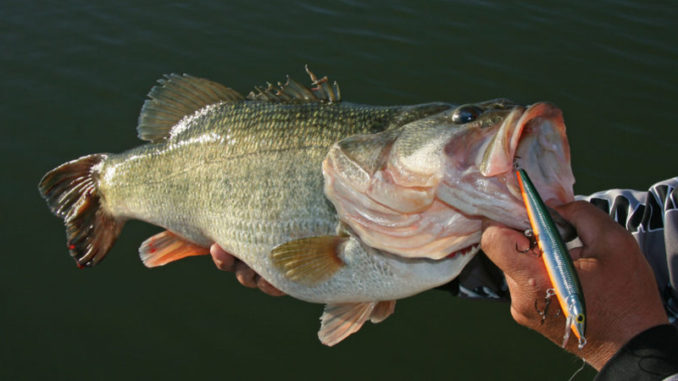
Jerkbaits are a type of fishing lure known for their erratic, darting action and effectiveness in enticing bass to strike. Let’s delve into an explanation of jerkbaits and explore their key characteristics:
- Definition: Jerkbaits are hard-bodied fishing lures designed to imitate injured or fleeing baitfish. They are typically made of wood or plastic and feature a slim, elongated body shape.
- Diving Depth: Jerkbaits are available in different models, each with a specific diving depth range. Some jerkbaits are designed to suspend at a specific depth, while others sink or float. This versatility allows anglers to target bass at various water depths, from shallow to deep.
- Action and Movement: The unique characteristic of jerkbaits lies in their action and movement. When retrieved, jerkbaits exhibit an erratic side-to-side darting motion, imitating the injured movements of a distressed baitfish. Anglers impart this action by jerking the rod tip sharply, causing the lure to dart and change direction abruptly. Pauses between jerks allow the jerkbait to suspend or slowly rise, further enticing nearby bass.
- Attractiveness: The combination of the jerkbait’s realistic appearance and erratic action makes it highly attractive to bass. The sudden movements and pauses mimic the behavior of an injured or vulnerable prey item, triggering the predatory instincts of bass and enticing them to strike.
- Versatility: Jerkbaits can be effective in various fishing scenarios and seasons. They work well in both cold and warm water conditions and are particularly effective during the pre-spawn and post-spawn periods when bass are actively feeding. Jerkbaits are versatile lures that can be used in open water, around structure, or near vegetation.
- Retrieve Techniques: Effective jerkbait retrieves involve sharp, downward jerks of the rod tip, followed by brief pauses. The length and intensity of the jerks can vary depending on the behavior of the bass and the desired action of the lure. Experimenting with different retrieval speeds, cadences, and jerk lengths will help you determine what triggers the most strikes.
- Sound and Visual Appeal: Some jerkbaits are equipped with internal rattles that produce a subtle sound when the lure is in motion. The added sound, combined with the lure’s darting action, attracts the attention of bass. Additionally, jerkbaits often have realistic finishes, detailed color patterns, and 3D eyes, enhancing their visual appeal and increasing their effectiveness.
Jerkbait Fishing Techniques
Retrieving jerkbaits with the right techniques can be highly effective in triggering strikes from bass. Here are some techniques to help you retrieve jerkbaits and entice bass to strike:
- The “Jerk and Pause” Technique: The classic jerkbait retrieve involves sharp jerks of the rod tip followed by pauses. Start by casting your jerkbait to the desired location. After the lure hits the water, quickly reel in any slack line. Then, using short, sharp jerks of the rod tip, impart an erratic side-to-side darting action to the lure. Each jerk should be followed by a pause, allowing the jerkbait to suspend or slowly rise. The pauses are crucial as they give bass time to track and strike the lure when it is momentarily vulnerable.
- Vary the Jerk Length and Intensity: Experiment with the length and intensity of your jerks to find what triggers the most strikes. Sometimes shorter, more rapid jerks work best, while other times longer, more exaggerated jerks are more effective. Bass may have different preferences depending on factors like water temperature, baitfish behavior, or their current feeding activity. Be ready to adjust your jerks based on the bass’s response.
- Adjust the Pause Duration: The length of your pause can play a crucial role in enticing strikes. Start with shorter pauses of a few seconds and observe if bass are striking during that time. If not, gradually increase the pause duration to give bass more time to hone in on the lure. Experiment with different pause lengths to find the pause that triggers the most strikes from the bass in your fishing area.
- Use a “Walk the Dog” Retrieve: Some jerkbaits are designed to be retrieved in a “walk the dog” style, similar to topwater lures like a Zara Spook. Instead of sharp jerks, you’ll use gentle sweeps of the rod to create a side-to-side gliding action. This retrieve can be effective when bass are less aggressive or when they are focused on prey near the surface.
- Vary the Retrieval Speed: Experiment with different retrieval speeds to find what the bass prefer on a given day. Sometimes a slower retrieve with longer pauses is effective, while other times a faster, more aggressive retrieve triggers strikes. Adjust your retrieval speed based on the bass’s response and the prevailing fishing conditions.
- Pay Attention to Depth: Jerkbaits can be retrieved at different depths by adjusting your retrieval speed and the duration of the pauses. Experiment with shallow retrieves near the surface, as well as deeper retrieves by counting down the lure or using a sinking jerkbait model. Varying the depth can help you locate where the bass are holding and increase your chances of triggering strikes.
Reeling this In
From bass fishing lures like jerkbaits, crankbaits, spinnerbaits, and soft plastics to topwater lures that create explosive strikes, each lure offers unique characteristics and advantages.
Furthermore, patience and perseverance are key traits for any angler. Bass fishing can be challenging at times, but with practice and a willingness to learn from each outing, you’ll develop the skills and knowledge necessary to consistently catch bass.
So, grab your tackle box, choose your favorite lures, and head out to the water with confidence. Whether you’re casting a jerkbait through a weed bed, working a soft plastic along a drop-off, or making enticing splashes with a topwater lure, each cast brings the excitement of the unknown and the potential for a memorable catch.
Enjoy the journey, appreciate the beauty of nature, and savor the moments spent on the water. Bass fishing is not just about landing fish; it’s about immersing yourself in the serenity of the outdoors and creating unforgettable memories.
Tight lines and happy fishing!

